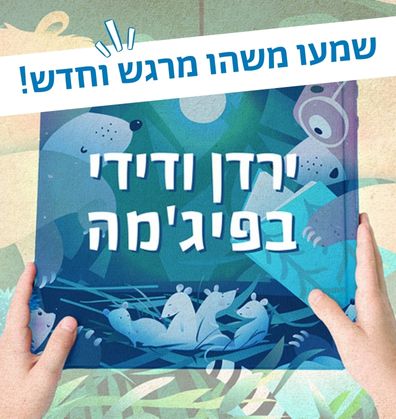חַגִּים וְיָמִים מְיֻחָדִים
פסח
איך מעבירים סיפור לדורות הבאים? משחקים אותו, שרים אותו, קופצים אותו, אוכלים אותו, ו... קוראים אותו!
לפניכם ספרים הקשורים לנושא פסח ורעיונות ותכנים חגיגיים לקראת חג האביב ולערב החג: פסח מי יודע? משחק קלפים לליל הסדר מתורגם לחמש שפות, משחק קואה קואה פסח להורדה ועוד המון כיף, בכרטיסיות הפעילות בעקבות הקריאה!
לפניכם ספרים הקשורים לנושא פסח ורעיונות ותכנים חגיגיים לקראת חג האביב ולערב החג: פסח מי יודע? משחק קלפים לליל הסדר מתורגם לחמש שפות, משחק קואה קואה פסח להורדה ועוד המון כיף, בכרטיסיות הפעילות בעקבות הקריאה!
סְּפָרִים
Book-Related Family Activities

Tip for Family Reading
Children enjoy feeling all grown up. While reading a book, let your children play a part, and enhance their sense of capability: You can ask them to select a book off the shelf, hold it, turn the pages, or even tell you or one of the stories in their own words.

I Can’t
Avivi tells her mother that she cannot tidy up her room because she is too small. After reading this book, you can discuss and think together – is it easy or hard to tidy up your room? What can help you tidy it up? What are you able to do now that you were not able to do in the past because you were “too small” to do it?

Tidying up before the time is up!
You can have fun and try to break a “family record” in tidying up a room: Place various toys and items in the main room of the house, set a timer, or decide when the time will be up. Ready? Set? Go and work as a team to put all the items back where they belong as fast as you can! How long did it take? Did you finish before the time was up?
Puppet Theater
Avivi asks her toys to tidy up the room, but they say they can’t – the teddy bear is too tired, and the frog is too lost… How about your toys? What are they unable to do and why? What would you like to ask them to do? You can put on a show with puppets and toys, making up various day-to-day situations or tasks for them to do together.
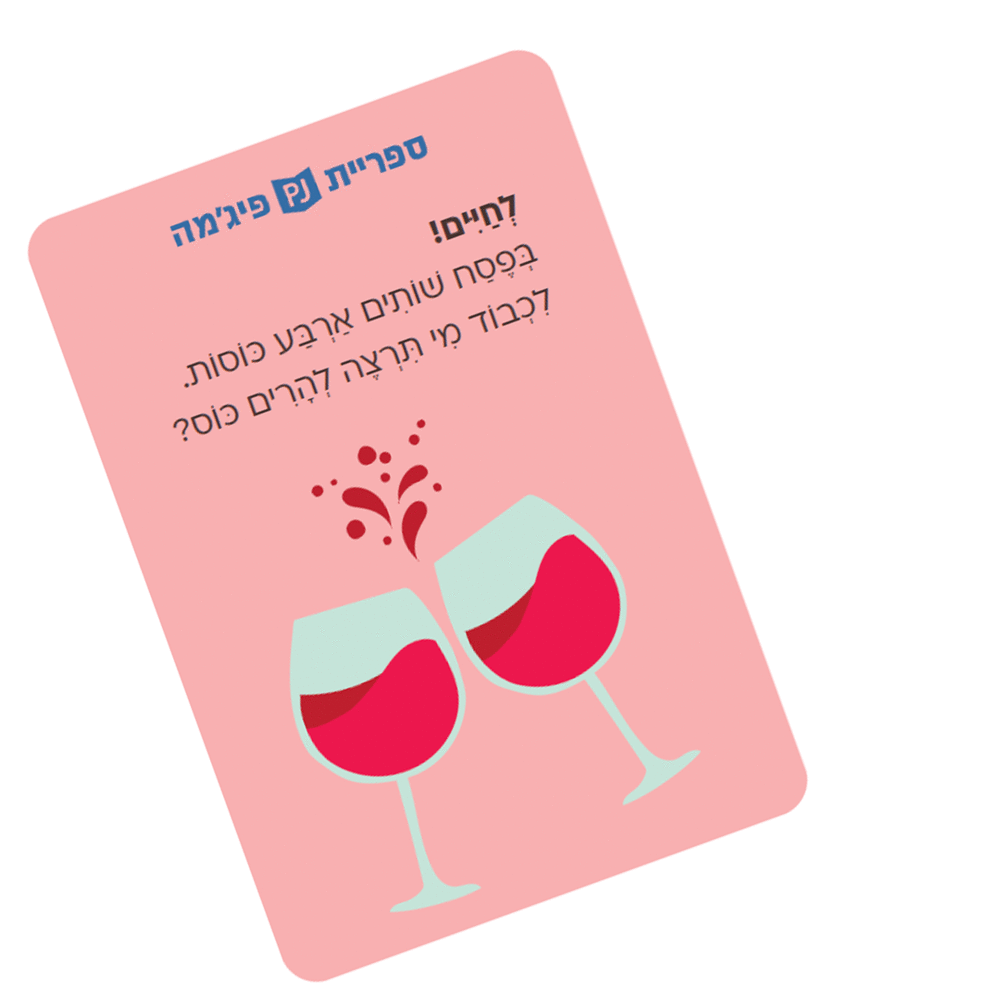
Pesach trivia
What are the three things you would have taken with you when leaving Egypt? And who can leap like a frog from the second plague? Scan the code and you will be able to print out an amusing card game that will enhance your Seder Night experience.
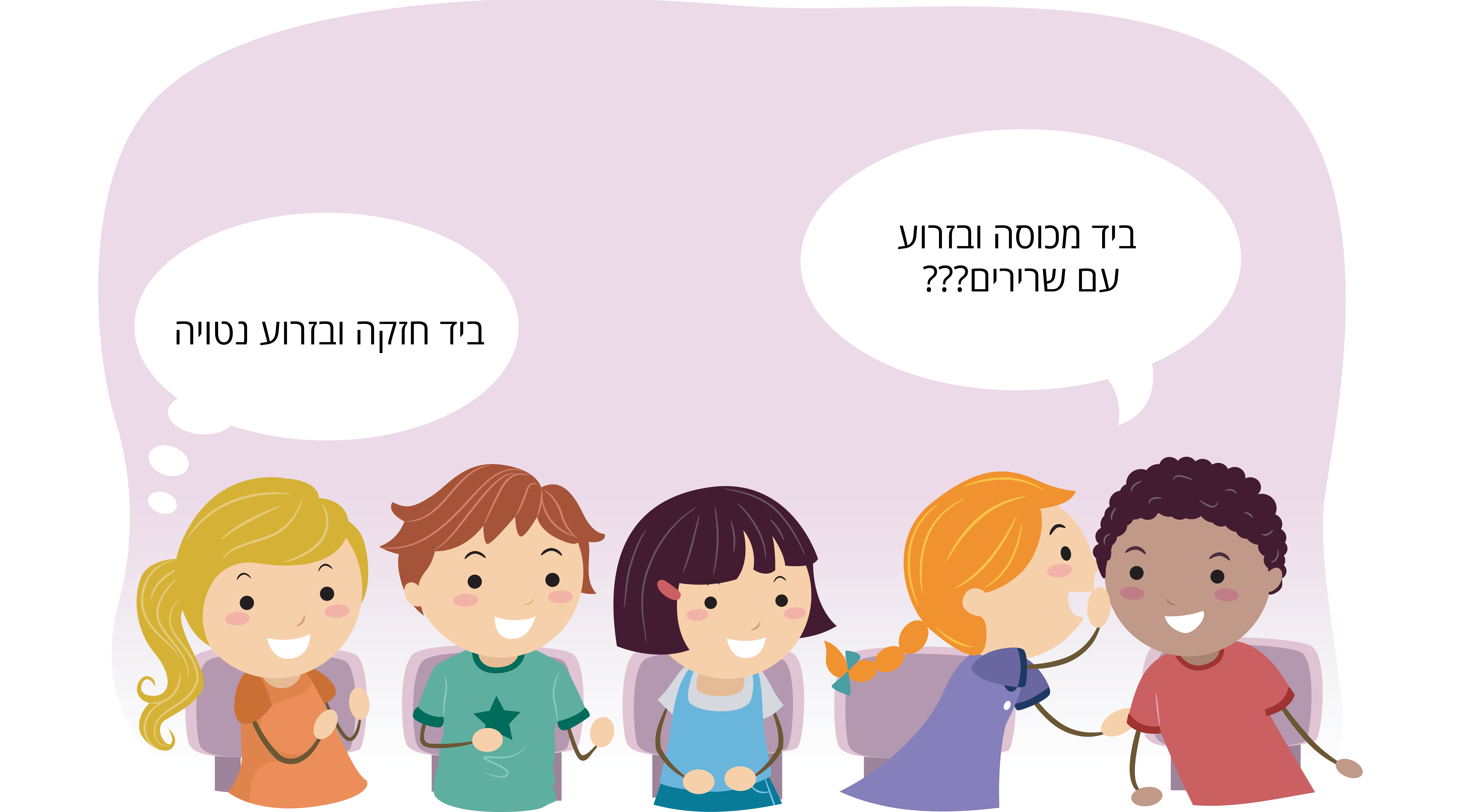
Hide and Seek
You can hide the afikomen or any small item and ask family members to look for it. Is it in the kitchen? Under the couch? Perhaps in the closet? In the next round, the one who found the item will hide an item of his or her choice, while the others go looking for it… Good luck!
Pesach activities
This book offers parents the opportunity to tell their children about their childhood Seder Night experiences: Did you hide the afikomen? And who found it? What did you like about Pesach as children? And what do you like about it now – parents and children?
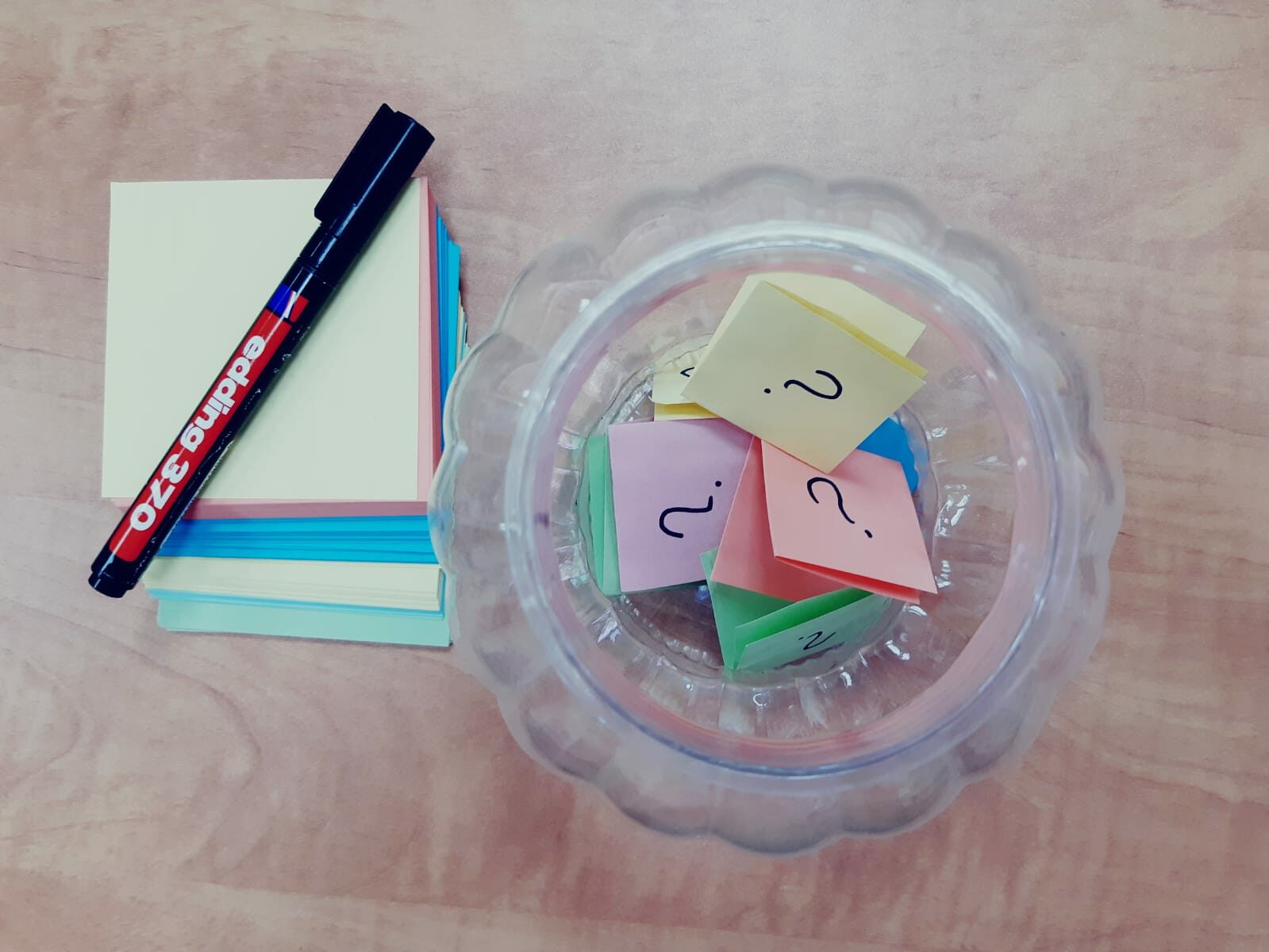
Where is the frog?
A small frog is visiting for Seder Night wearing an ancient Egyptian headdress. Can you look through the illustrations and find it? Why does it appear in the illustrations, in your opinion?
Songs for all Times
This book is a gift that can accompany you as a family throughout the year: on festive holidays and in changing seasons, with the arrival of Autumn and in preparation for a birthday celebration. Choose the appropriate song for each coming occasion or holiday, read it together, look at the illustrations, sing and celebrate. Poems and illustrations Read the songs together and look at the illustrations. Which illustrations attract the children’s attention?
Songs and Illustrations
Read the songs together and study the illustrations. Which illustrations draw the children’s attention?
You can look together at what you see in the illustration and what details appear in it.
Words and Melodies
Many of the songs in this book were composed to music. You can take a cymbals, wooden spoons or lids of pots and pans, and accompany the singing by playing music and dancing. Once the children are familiar with the song, you can play a guessing game: starting humming the tune, and invite the children to guess the rest and join you.
What’s Hiding in the illustration?
Open the book randomly, or at a favorite song, and let each person in turn name an item that everyone else must look for in the illustration: Find in the illustration: Where is the house with a red roof? Where is the pomegranate? Where are the clowns?
Discussion
How do you prepare for Pesach? Do you have a family tradition that has been passed on from one generation to the next? Perhaps you would like to discuss it with your child. You could tell them how you, parents, celebrated Pesach when you were growing up, sharing a family custom or story with them that has stayed with you all these years.
About a dish
Do you have a dish at home that is associated specifically with Pesach? How about looking at it together, and telling its story: Where did it come from? Why was it kept by your family? What is it used for during Pesach?
Illustrations tell stories
What can we learn from the illustrations in this book? Do they help us imagine Workito’s and Almaz’s lives in Ethiopia? You may enjoy choosing a certain illustration, looking at it together and discussing which character you would be interested in chatting with, what you would ask this character, and whether you would like to join him/her.
In with the new
Following Workito’s story, you may want to touch up items you love that are now tattered or torn. You could draw on an old t-shirt, color an old hat, cover an old planter with a mosaic, decorate some kitchenware, or create a completely new item from a broken dish. Do you like the way it turned out?
Datia Ben Dor
was born in Alexandria, Egypt, in 1944, and immigrated to Israel at 12 months. At the beginning of her professional career, Ben Dor engaged in music education, writing scripts and songs for many Israeli children’s television shows, such as Parpar Nechmad (“Lovely Butterfly”), and Rehov Sumsum (the Israeli version of Sesame Street). Her children’s poems and numerous books are well-known and loved, among them Ani Tamid Nishar Ani (“I Always Stay Me”), Digdugim (“Tickles”), Otiyot Mefatpetot (“Chatting Letters”), and Kakha Zeh BeIvrit (“That’s How it is in Hebrew”). Datia Ben Dor has received much recognition for her contribution to children’s literature, such as the ACUM award, and Bialik Prize for Lifelong Achievement in Children’s Literature.
Proposed Family Activities:
- Can your child find Passover symbols in the illustrations? Perhaps you could ask them to point out the four cups, matzah, Passover Haggadah and wine. You may also want to look for clues that spring has arrived – short-sleeved shirts and shorts, flower bloom, and clear skies.
- Do you know the tune to this song? How about singing it together, dancing round and round?
- Springtime beckons us to go outside and enjoy nature. Where do you like to be when you are outdoors? Perhaps you could take this book along with you, take a stroll near your house, and look for signs of spring together.
- You may want to make “spring binoculars” and look through it all around. Decorate two toilet paper rolls with stickers and crayons, and attach them to one another on their long side. What can you see through your binoculars?
- Ma Nishtana? What has changed in your home in preparation for Passover? Young children can also take part in preparing for the holiday, and particularly Seder Night. Perhaps you could invite them to help you set the festive table, sing Passover songs, ask the Four Questions, and look for the Afikoman, of course!
- Datia Ben Dor has written many well-loved poems and stories for toddlers and preschoolers. You may want to look for them at home or in the library, and read them together.
האזינו לסיפור "החוצה"
הימים האלו עכשיו הם ימים לא רגילים, ובימים כאלה סיפורים יכולים לשמח, לרגש, אפילו להצחיק. אנו מזמינים אתכם/ן להאזין להקלטה הקסומה של הספר “החוצה”, מאת: רינת פרימו | איורים: איתי רייכרט | ידיעות ספרים.
האם יצליח אבא ללמד את איתמר שגם המסדרון, חדר המדרגות ואפילו הרחוב הם שלו? האזינו לסיפור וגלו!
יוצרים ומגישים: ירדן בר כוכבא – הלפרין ודידי שחר
מוזיקה ונגינה: טל בלכרוביץ’
פתיח ההסכת ולחן השיר בסיפור “החוצה”: דידי שחר

Proposed Family Activities:
- You may want to lead through this book, and look at the illustrations together. You could ask your child to tell you the story in their own words based on the sequence of illustrations.
- Perhaps you could ask your child for their opinion as to why Itamar’s father tells him that the corridor, stairwell, and street belong to him too.
- Perhaps you would enjoy taking a walk in the neighborhood, and discovering the buildings, roads, and landscape near your home. Does anything in the shared spaces need improving or cleaning? Perhaps you could initiate a local activity, such as tidying up and decorating the stairwell in your building, or setting up a community garden.
- Your child can join Itamar by tidying up their room, and sorting through their toys. Perhaps you will find long-forgotten “treasures”! You may want to decide what to keep and what to throw out, or donate to others, together. You can also try to fix broken toys, or think of ways to recycle some items, and use them in a new way.
- Do you also have some broken crayons you were thinking of throwing out? They can be recycled! Sort them into similar shades, peel off their paper labels, and place them into a paper or silicone baking tray. Bake at a low heat until the crayons melt, cool the mixture, take out of the baking tray, and enjoy your new, multi-colored crayons!
Family Activities
- Have your children “read” the pictures and tell you the story, using the illustrations as their guide. You could pay particular attention to Moses’ facial expressions, and ask your children why they think he didn’t give up on one little kid, despite the fact that he had an entire large flock with plenty of goats?
- Even young children can be “big” and responsible! Help your children recall occasions when they were helpful to other children or small animals. Point out that even small, seemingly unimportant acts of kindness can be very meaningful for those in need; they also serve as a personal example for the entire “flock.” Afterwards, you could draw a picture together depicting one of the times when your children helped others.
- The story of Moses and the kid takes place in a desert. Are your children familiar with desert life – the different kinds of flora and fauna, the wells and oases, etc.? Have you ever visited a desert? Or perhaps you live in a desert area? You might go on a field trip, and compare the climate and scenery on your trip to that in the story.
- Look for the illustration that shows Moses carrying the little kid on his shoulders. Ask your children if they ever felt so tired that they asked to be picked up. Children often ask to be carried, even after they are big enough to walk on their own. You could discuss the times you carried them and the times they were able to walk independently. You could play piggy-back around the house, pretending to be Moses with the little kid.
- Many of our leaders started out as shepherds. Discuss the work that a shepherd does, and the qualities that go into making a shepherd. You could think together about how working as a shepherd helped Moses, when the time came, to lead the Israelites in the wilderness. Try to recall other shepherd-leaders in Jewish tradition (for example, King David and Rabbi Akiva).
- Moses struggles to catch up with the fleet-footed little kid. You could play “catch” together. First, you might play the role of Moses and call to the kid, “Little kid, stop. Little kid, come back!” while your children play the kid that “runs faster and faster.” Then switch roles. Who ran faster – you, or your children?
- What other stories and tales about Moses do your children know? After reading this book, you could tell the story of the Exodus from Egypt and the Israelites’ wanderings in the wilderness, and talk about the figure of Moses.
Activities to Do Together at Home
Spend some time looking at the illustrations together and recalling all the things that the girl in the poem loves. Ask your children what they love “the most in the world.”
Did anything in the illustrations make you laugh? In the poem, the girl drew a lion that came out looking more like a rabbit, so she called it her “rabbitlion.” You and your children could draw some imaginary animals and invent made-up names for them.
Accepting oneself does not mean having no aspiration to improve. Have a conversation with your children about the things in our lives that we need to learn to accept, and contrast those with the things that we could strive to change. Brainstorm together about something that you all would like to improve, and about ways to achieve that goal.
Explain to your children the meaning of “Who is rich? The person who is happy with what they have,” and discuss what it signifies to each of you. Ask your children: who is rich in their eyes? What makes each member of the family happy? And what makes us, taken together as a family, happy?
You might start a new family tradition, using bedtime to recall the good things that happened today, and the good people that we love. Each family member might say two good things that happened to them today, and mention someone or something that they especially cherish.
Family Activities:
- Perhaps you would enjoy looking at the illustrations and finding clues for the holidays mentioned in the story: Sukkot, Hanukkah and Purim. You could discuss the holidays in your family together: what do you especially like about each holiday? With whom do you spend them? Does your child have a favorite holiday?
- When you read the story for the first time, did you guess where Grandpa was taking little Hannah? Does your child also share a special relationship with an older member of the family? You may want to ask the elderly members of your family how they used to celebrate Passover. Which special customs or dishes did they have at home? Did they also sing Ma Nishtana as children on Seder Night?
- How do you celebrate Passover in your family? Does your child also have a special role to play on Seder Night? You may want to create a holiday scrapbook together, and suggest that your child draw the family celebrating together on Seder night and throughout the holiday.
- Does your child know any Passover songs, traditional or new? Can they sing Ma Nishtana? You may enjoy singing Passover songs together.
- On Seder Night, Hannah realizes that being the littlest Levine is the best. You may also want to discuss issues of big and small in your family. Ask your child what they would have liked to do on their own, and think of tasks in preparation for Passover that your child can do themselves. Children are happy and love to help – it would be wonderful if you could give them the opportunity to feel all grown-up!
Family Activities
The lyrics and illustrations in the book mention various Passover symbols. Can your child find the Four Cups, a Matzah, a Passover Haggadah, nuts, and new clothes?
Do you know the tune of this song? You can find it here. What other Passover and springrelated songs do you know? You may want to create an illustrated book of your own together, featuring well-loved Passover songs, from which to sing holiday songs on Seder Night.
The little girl in the book shares the Passover experience with her dolls, and teaches them how Seder Night is conducted. You could also have a Seder Night with your children and their toys, it is a wonderful fun way of getting ready for the holiday.
Passover is the Festival of Spring – a great time to go outdoors and enjoy nature! Where do you like to take trips, and what do you see on your way? Like the little girl in the book, you may like to look for flowers along the way and, if it is permitted, pick them and make a scented bouquet at home.
The book pictorially depicts the festive Passover atmosphere: festive clothes, guests, special food, and family customs. How do you celebrate Passover? You may want to include your child in the preparations for the holiday, as well as Seder Night itself. You could assign them age-appropriate roles, such as helping you tidy up and set the table, sing holiday songs, ask the Four Questions, and of course, look for the afikoman!
Which experiences do you recall from Seder Night as a child? Young children love hearing stories of the past. You may want to share pictures, stories, possibly funny anecdotes of Seder night when you were kids, thereby continuing to strengthen the generation chain of your own family’s unique Passovers. Enjoy reading and discussing the story!
Bilha Yafeh
An authoress, poetess and Israeli educator born in Lithuania in 1891, who immigrated to Israel in 1913, teaching and educating generations of teachers at the David Yellin College of Education in Jerusalem. Yafeh wrote children’s poems, stories and plays. Many of her poems became cultural assets in Israeli children’s literature, among them: Bubba Yemima (Jemima the Doll), Hatul Shovav (Mischievous Cat), and Simcha Rabba (Great Joy). Bilha Yafeh and her husband Mordechai were among the founders of Bet Hakerem neighborhood in Jerusalem, and HaMora (The Teacher) Street was named after them. Bilha passed away in 1961.

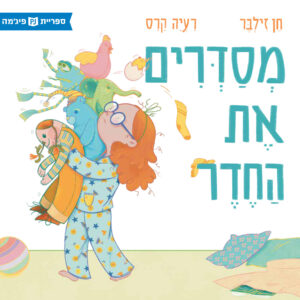 Tidying Up the Room
Tidying Up the Room 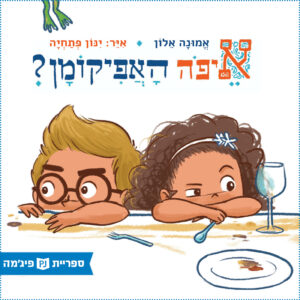 Where is the Afikomen?
Where is the Afikomen? 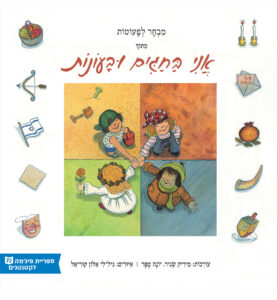 The holidays, seasons and me
The holidays, seasons and me 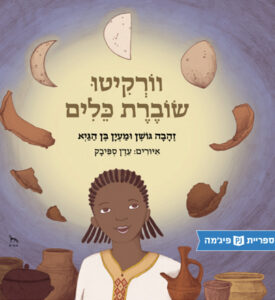 Workito Breaks the Dishes
Workito Breaks the Dishes 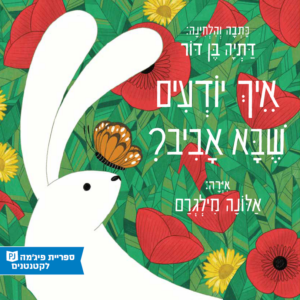 How do You Know that Spring has Come?
How do You Know that Spring has Come? 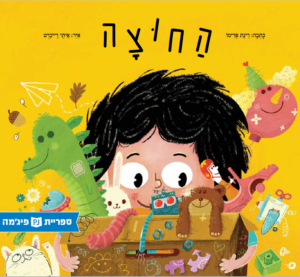 Out
Out 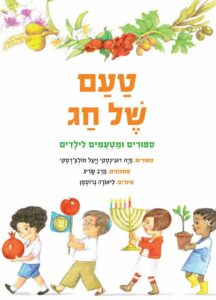 Festive Flavors
Festive Flavors 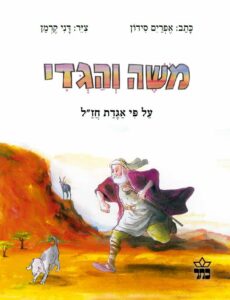 Moses and the Baby Goat
Moses and the Baby Goat 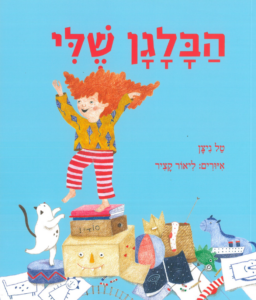 My Mess
My Mess 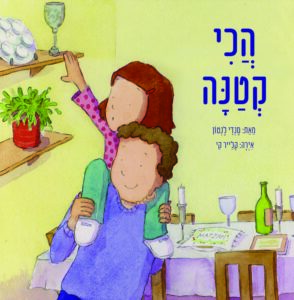 The Littlest Levine
The Littlest Levine 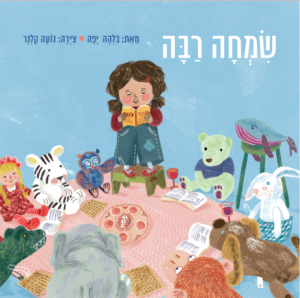 Simcha Rabba (Great Joy)
Simcha Rabba (Great Joy) 


